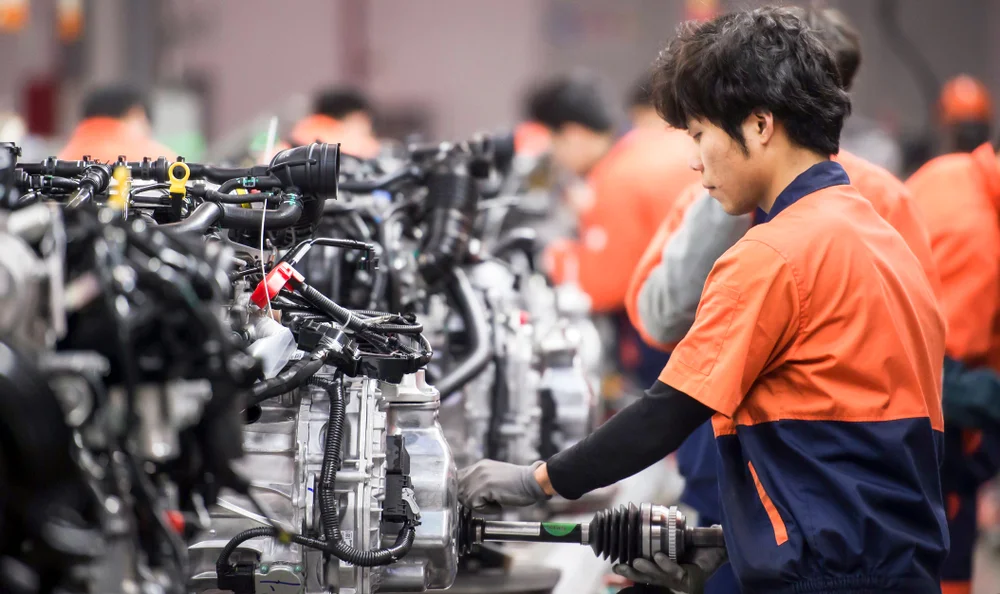
The Truth about Chinese Manufacturing
What is it about the American experience that makes us so much more productive on a per-capita basis?
Imagine for a minute that you have the world’s greatest chef working in your restaurant. The food is so incredible that people regularly travel from miles away to dine at your restaurant. Then, a new restaurant opens, and while it sells an impressive quantity of food, everyone is very much aware that its quality is lacking. While your restaurant’s output has remained steady, you decide that you need to protect your restaurant from this new entrant. To do so, you actively make it harder for your chef to buy ingredients, telling them, “if you want ingredients, you’ll have to grow them yourself!”
If this sounds absurd, that’s because it is. Unfortunately, this is exactly what Washington politicians are doing to the manufacturing sector in the United States right now. Why is that? Because of, primarily, China’s supposed manufacturing “dominance.”
It has become standard parlance for members of both parties to wax poetically about the “hollowing out” of the American manufacturing industry. President Biden said as much in 2022 as did President Trump just this past April. For the most part, these two are referring to jobs in manufacturing, which have certainly declined over the last 50 years. However, some go even further, purporting that “we don’t make anything anymore.” Trump said as much in 2015 while on the campaign trail to his first term in office, David Brooks echoed this in 2023, and Mark Blyth joined this chorus just this past March.
What are the facts?. China’s manufacturing output for 2024 reached a staggering $4.67 trillion in total value added. The US, by comparison, produced a mere $2.91 trillion. By all accounts, in raw terms, China is producing about 60% more output than we are.
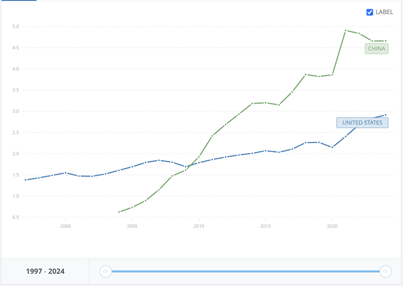
Manufacturing, Value Added (in trillions of USD). Source: World Bank
However, what is often overlooked, despite its widespread acknowledgment in other contexts, is the fact that China has a very large population. And when it comes to manufacturing, the numbers are simply staggering. In 2020, the year of China’s most recent census, over 120 million people were working in the manufacturing sector. Later, independent reports have the Chinese manufacturing workforce at over 212 million people. This means that the average Chinese manufacturing worker generates between $22,028 and $38,916 in value-added. By comparison, America employs just 12.7 million manufacturing workers, which is 6-10.6% of the number of manufacturing workers that China employs. On average, US manufacturing workers generate $229,133, which means our workers are between 6 and 10 times as productive as the average manufacturing worker in China.
This is absolutely incredible and underscores that those who claim “we don’t make things anymore” or that “China is destroying our manufacturing sector” are, in a word, wrong. Does China produce more raw output than we do? Of course. But this is not because they are an economic superpower. It’s because they have a significantly larger number of people employed in manufacturing than we do. In fact, they have about as many, if not more, people employed in manufacturing alone as the US has employed total. But on a per-capita basis, the US is by far and away the leader, and it’s not even close.
What is it about the American experience that makes us so much more productive on a per-capita basis?
First, we have a lot of capital. One crucial measure garnering significant attention today is foreign direct investment, which has steadily poured into the United States, decade after decade, with a particular focus on manufacturing. In fact, this is where the Bureau of Economic Analysis says, foreign direct investment has “increased the most.” Furthermore, most of this capital is privately directed, in the sense that private companies must attract capital and then deploy it in ways that are largely at their discretion. While they are free to reap the rewards of successful entrepreneurial efforts, they must also shoulder the blame for failed attempts. This profit-and-loss system provides useful feedback on the efficacy of any economic undertaking.
In contrast to China, the difference is night and day. Despite privatization reforms over the past several decades, China remains, for the most part, a state-led economy, with the Chinese Communist Party able to direct resources toward politically determined goals. This can be a viable strategy in the short run, but it is fundamentally incompatible with long term, sustained economic progress. Understanding this helps us better comprehend why China often seems to be on the verge of soaring heights and crashing lows.

Second, historically, we have been at the forefront of attracting talent from around the world. As Ronald Reagan said,
We lead the world because, unique among nations, we draw our people, our strength, from every country and every corner of the world. And by doing so, we continuously renew and enrich our nation. While other countries cling to the stale past, here in America, we breathe life into dreams, we create the future, and the world follows us into tomorrow.
Because we are so attractive as a destination for employment, the world’s best and brightest, for the most part, dream of working in America.
China, by comparison, derives its strength from its substantial population, which is currently ranked second in the world, behind only India. China’s population is so large, in fact, that they have more people than the following five most populous countries combined. With that many people, producing as much output as they do across so many sectors is not a mystery.
A troubling statistic for China, though, is the remarkably low rate of immigration into its country. Recent statistics indicate that the total number of foreign-born residents is around one million, giving them arguably the least diverse economy in the world, with less than 1% of their population being considered “migrants.” In the US, that figure is about 15-20%. Put simply, despite their supposedly impressive economic prowess, very few people want to move there, which means that if they're going to stay at the cutting edge of technology, they must steal intellectual property from others and try to reverse engineer it. However, because they steal only the successes, they lack knowledge of the failures that contributed to their creation. Knowing what did not work is, in many ways, just as important, if not more important, than simply knowing what did work. As a result, their attempts at copying other countries’ innovations are not facsimiles; they are knockoffs known for their low quality and low dependability.
A Troubling Turn (for the US)
Despite these enormous advantages, Washington is undermining its own position. Tariffs, export restrictions, and protectionist policies — defended under slogans such as “economic security” and “reshoring” — are making it more expensive for U.S. firms to obtain the necessary inputs. According to the Peterson Institute for International Economics, average U.S. tariff rates are now at their highest levels in more than 80 years, raising costs for intermediate goods and materials across the board. The National Association of Manufacturers estimates that tariffs on steel and aluminum alone have cost U.S. firms over $9 billion per year, inflating prices for machinery, vehicles, and construction equipment.
Ironically, these same policies strengthen China by hobbling America’s most efficient manufacturers — those who rely on global supply chains to remain competitive. Tariffs don’t protect industries; they tax them. They act as a drag on productivity, pushing firms to pay more for once affordable components, thereby reducing their global market share.
Just as damaging is the growing hostility toward skilled immigration. H-1B visa reforms and bureaucratic slowdowns have sharply reduced the inflow of high-skill labor. The National Foundation for American Policy reports that approval rates for initial H-1B applications have fallen from roughly 95 percent in 2015 to around 75 percent in recent years. The result is that talented engineers, programmers, and scientists who once came to the U.S. are now choosing Canada, Australia, or Europe instead.
A Path Forward
The way forward is clear: stop sabotaging the chef.
America’s manufacturing sector doesn’t need protection — it needs freedom. Lift the tariffs that act as hidden taxes on production. Reform immigration rules to attract and retain global talent rather than repel it. And resist the political impulse to micromanage industry through subsidies, mandates, and industrial policy experiments that inevitably favor well-connected firms over innovative ones.
Economic interdependence is not a weakness to be “weaponized.” It is the foundation of resilience. True security comes not from isolation but from openness: diversified supply chains, dynamic competition, and the freedom to trade and innovate.
China will remain a major player in global manufacturing, but size and strength are not synonymous. The U.S. continues to lead the world in productivity, innovation, and the ability to translate ideas into value. Policymakers would do well to remember that success in markets doesn’t come from fear or protectionism — it comes from letting the best producers do what they do best.
After all, no great restaurant ever stayed great by locking its chef in the garden and making them grow their own ingredients.
Dave Hebert, Ph.D, is a senior research fellow at the American Institute for Economic Research.
Peter C. Earle, Ph.D, is a senior fellow at the American Institute for Economic Research.
Economic Dynamism

The Causal Effect of News on Inflation Expectations
This paper studies the response of household inflation expectations to television news coverage of inflation.
.avif)
The Rise of Inflation Targeting
This paper discusses the interactions between politics and economic ideas leading to the adoption of inflation targeting in the United States.

Ignore 'Open Letters' From Economists
Don’t be swayed by “open” letters signed by well-known and well-respected scholars, experts, professors, and businessmen.
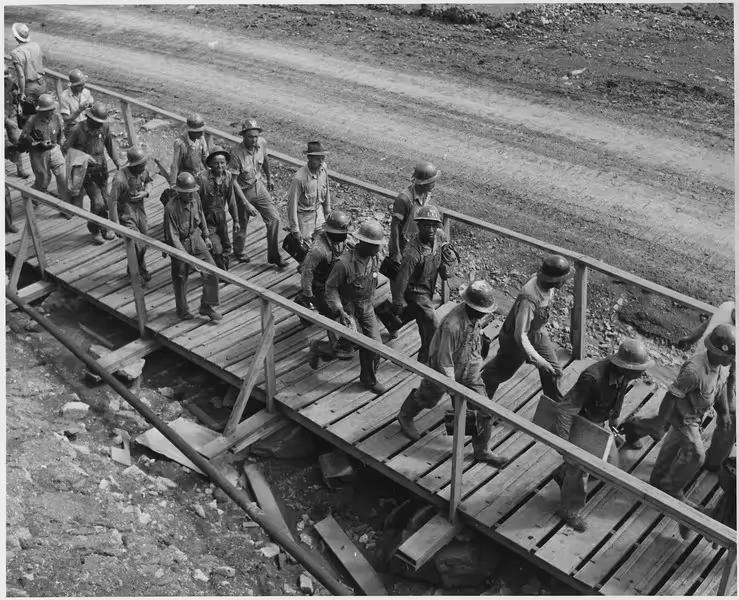
Demystifying the New Deal
Carola Binder reviews False Dawn: The New Deal and the Promise of Recovery, 1933–1947 by George Selgin
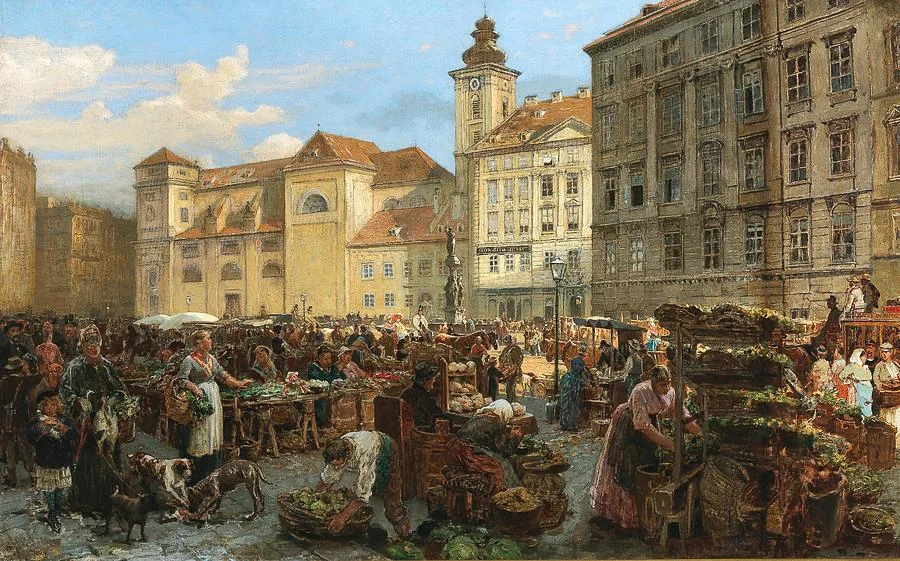
The Miracle of Economic Growth
Frey's book reminds us that progress is not self-sustaining — it depends on political courage, institutional adaptation, and the constant defense of the sphere of liberty.

Hydrocarbons Aren’t Disappearing
Credit ratings agencies remain enamored with the energy-transition myth — risking yet another green bubble for investors.





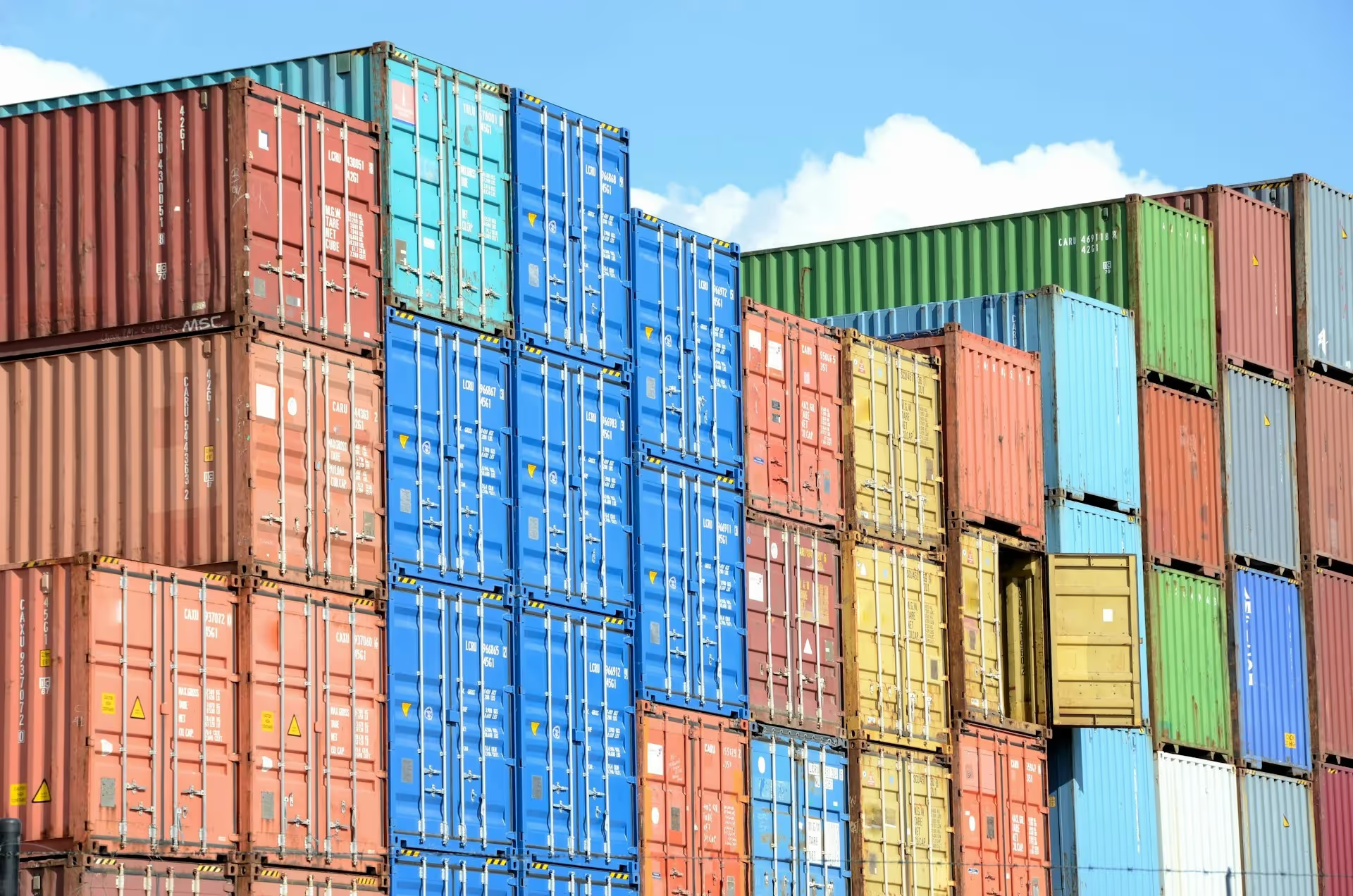
.jpg)



.avif)




